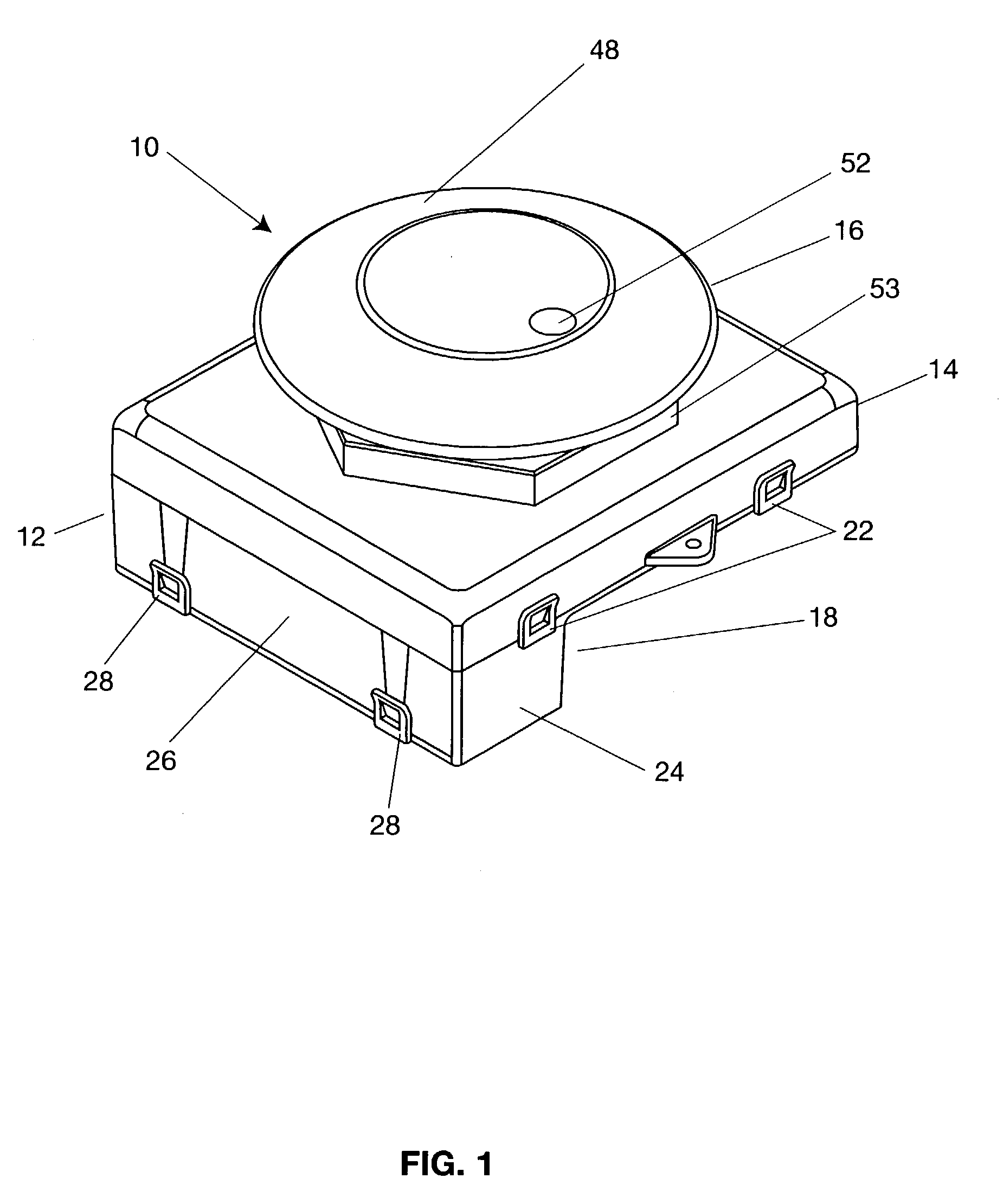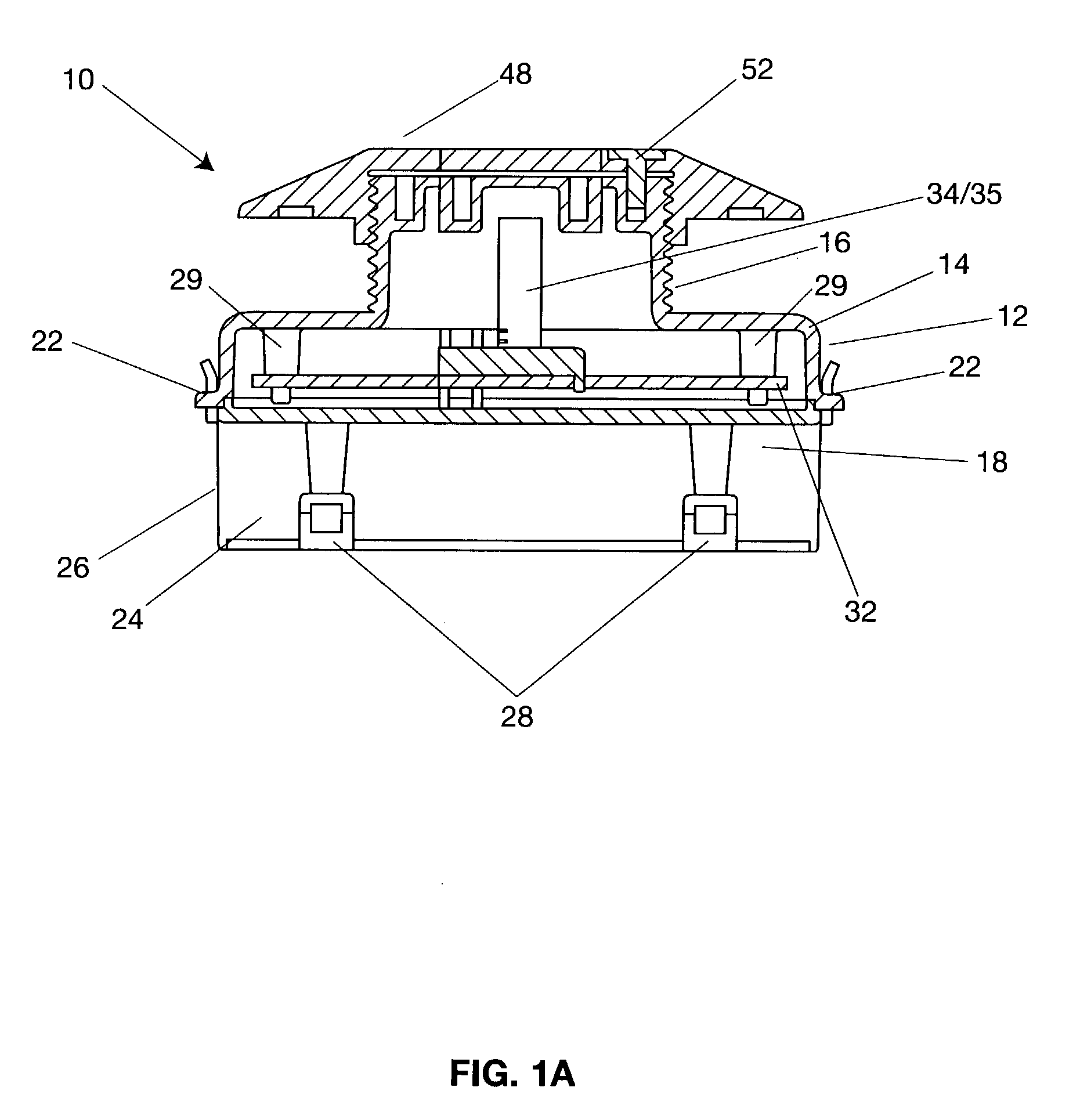Water pit transmitter assembly
a transmitter and assembly technology, applied in the field of water pit transmitter assembly, can solve the problems of tampering, false readings, and previous assemblies being subject to detachment, and achieve the effect of preventing frequency detachmen
- Summary
- Abstract
- Description
- Claims
- Application Information
AI Technical Summary
Benefits of technology
Problems solved by technology
Method used
Image
Examples
Embodiment Construction
[0022]In the following description, like reference characters designate like or corresponding parts throughout the several figures. It should be understood that the illustrations are for the purpose of describing preferred embodiments of the invention and are not intended to limit the invention thereto.
[0023]As best seen in FIGS. 1, 1A and 2, the water pit transmitter assembly 10 includes a housing 12 with multiple sections. The housing 12 is made of plastic and includes the main section 14, a top section 16 and a bottom section 18. The top section 16 is preferably configured as a cylindrical stalk of a size and shape to fit within a round hole, as is typically found on water pit lids. The top section houses the antennas, the main section houses the main electronics circuit board and the bottom section 18 houses the batteries for the unit.
[0024]The bottom faces of the main and bottom sections are fastened to the remainders of those sections with snap latches 22 and 28. The snap latc...
PUM
 Login to View More
Login to View More Abstract
Description
Claims
Application Information
 Login to View More
Login to View More - R&D
- Intellectual Property
- Life Sciences
- Materials
- Tech Scout
- Unparalleled Data Quality
- Higher Quality Content
- 60% Fewer Hallucinations
Browse by: Latest US Patents, China's latest patents, Technical Efficacy Thesaurus, Application Domain, Technology Topic, Popular Technical Reports.
© 2025 PatSnap. All rights reserved.Legal|Privacy policy|Modern Slavery Act Transparency Statement|Sitemap|About US| Contact US: help@patsnap.com



